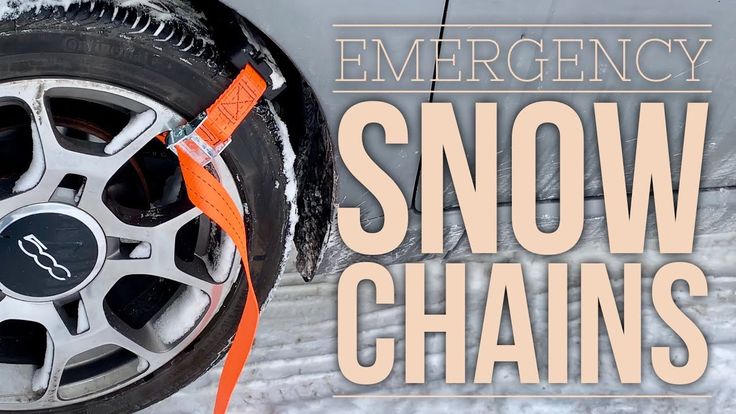Our automatic snow chains work at the flip of a switch and have been designed to give you traction on ice and snow pack. The ROTOGRIP® system provides excellent traction at low speeds due to the adjustable mounting system and unique chain wheel types. With replaceable contact rings, easy installation, and superior design for traveling in winter conditions.
Automatic tire chains were designed to give you traction on ice and snowpack at the flip of a switch. The speed of the vehicle causes the chains on the chain wheel to lift by centrifugal force; the weight of the chain determines the speed at which they lift and go under the tire. RUD Rotogrip chain wheels use a smaller chain which will lift at 3 to 4 MPH, and up to speeds of 30 MPH. The wheel has a flat surface that contacts the drive tire so that it has more surface area for less slippage.
The chain wheel touches the drive tire around 4 inches above the ground; thus if the snow is less than 4 inches, they will perform as they should. If the snow depth is greater than 4 inches, the snow will stop the chains from lifting and going under the tire. Automatic chain systems will correctly function if the snow is light and powdery, but if the snow is heavy and wet, it may stop the chains from lifting and going under the tire. In mountain driving, you may not encounter ice until you reach the higher elevations, but with the flip of a switch, you will be ready for the icy conditions. Automatic chains save time because you will no longer need to stop to install and remove the tire chain wraps, thus preventing the potential hazard of being struck by other drivers while outside of your vehicle.
No, automatic tire chains were designed for use on ice and packed snow only. We would suggest that you use traditional tire chains to help with better traction in mud.
If installed correctly, automatic chains will function with ease; they work best when the chain wheel location is centered on the drive tire. The vehicle drives over the chain if the chain wheel has been set up correctly and this reduces the wear on the chain wheel and drive tire; this is one of the superior features of RUD’s automatic chain mounting. For adjustability, RUD uses a mounting tube which allows us to move the chain wheel forward, or back to locate the chain wheel correctly.
Automatic tire chains can be felt under the tires when used on ice and snowpack, but the noise that they produce is low. When you reach dry pavement, the noise level will increase slightly; retract the chains when this occurs.
Rotogrip can be used on 3/4 ton pickups and up, including ambulances. Not enough clearance is allowed for automatic snow chain use on cars and SUVs.
RUD's wheels are not color coded because it works in reverse as well as they do in forward, and at lower speeds! If you have any questions or concerns about RUD Rotogrip chains, please contact a RUD representative for the correct information.
The chains are designed to run safely up to speeds of 30MPH, and if used correctly, they have been tested extensively and will not break. Rotogrip chain systems are the safest means of traction on ice and snow pack that are available today, and the results are seen by users worldwide. Deploying the chains at high rates of speed is the only way to break the chain links. The chains should be deployed and retracted at 10 MPH or less.
For more information please visit our Contact page or call us at 800-553-7993.
A press of a button and the chain wheel swings out. Then, strands of chain are slung under the tyre, increasing traction. It’s as simple as that – for the driver. But, if we take a closer look at the ingeniously simple principle behind, we realise that Onspot Automatic Snow Chains requires a good dose of engineering to become such a reliable tool for safety and convenience. Here is why!
Then, strands of chain are slung under the tyre, increasing traction. It’s as simple as that – for the driver. But, if we take a closer look at the ingeniously simple principle behind, we realise that Onspot Automatic Snow Chains requires a good dose of engineering to become such a reliable tool for safety and convenience. Here is why!
First, let’s give the rotating chain wheel some consideration. When engaged, it’s like a swing ride where the chains are moving freely in the air, pointing radially from the chain wheel center because of the centrifugal forces. Then, all of sudden, the chain is trapped by the pincer of rubber and road surface – the front of the tyre’s footprint. It’s now the chain is doing its job by increasing the static friction between the rubber and the road’s icy surface. And, at the back part of the footprint, as the drive wheel is rolling, the chain will release and swing around to the front, again and again.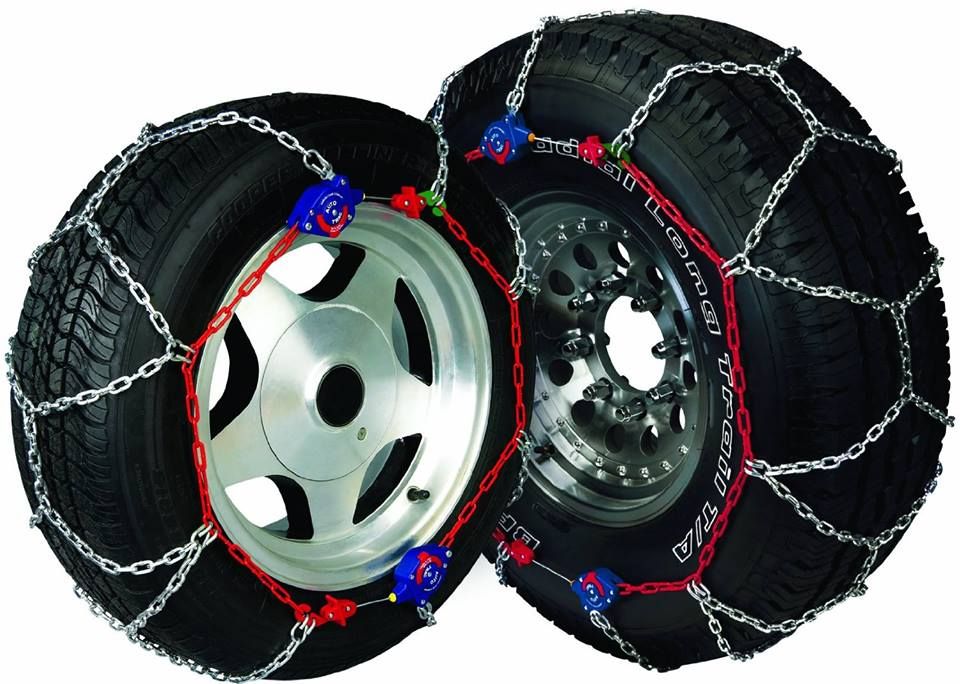
To learn more, read the blog post "What is traction, friction and road grip?"
If the chain wheel is moved forward, a longer part of the chain strand will end up under the tyre, thus increasing effectiveness. However, there’s a downside to this: A part of the chain will still be trapped under the tyre when the chain wheel is rotating trying to pull it free. The chain will be pulled out by force, putting excessive strain on the chain mounting. Furthermore, the chain end – that is released under tension from the tyre – may bend and hit the tyre side instead of ending up under the footprint, if it’s not completely stretched out. This will cause an unreliable and jerky operation, not to mention unnecessary wear on the tyre and road surface. Actually, this is the result of a chain wheel positioned too far to the front.
By moving the chain wheel position back, the chains will release easily, resulting in a smooth and un-jerky operation.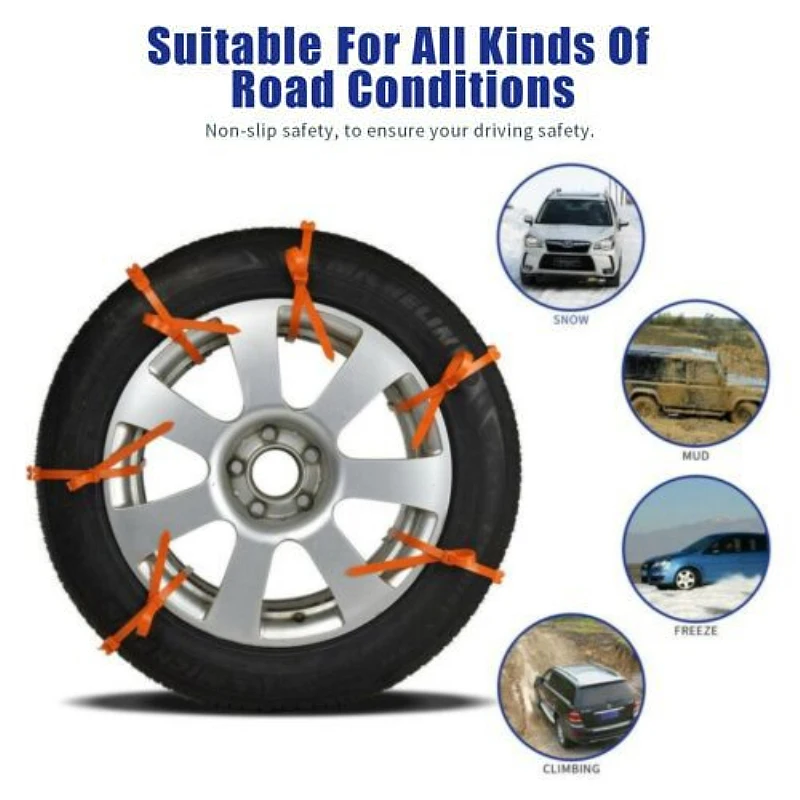 However, this comes at the price of reduced effectiveness since less chain would end up in the footprint. This is the result when the chain wheel is positioned too far to the rear.
However, this comes at the price of reduced effectiveness since less chain would end up in the footprint. This is the result when the chain wheel is positioned too far to the rear.
Obviously, we should find a compromise.
To spin freely, the chain wheel should be positioned at the ideal height – 100 ±20 mm above the road surface. But, which is the ideal length-wise position for the chain wheel? Countless calculations and computer simulations have been made to find out, and a range of field tests have been carried out to prove right or wrong. From extensive research and development over the years we can conclude that the wheel axle centre line is the golden middle for positioning the Onspot chain wheel. When positioning the chain wheel exactly in the drive wheel axle centre line you get the optimal combination of effectiveness, reliability and comfortable operation. Plus, you have exactly the same function whether driving forward or reversing.
Are Automatic Snow Chains something for you? Find it out here: 4 Questions to Consider When Thinking About Automatic Snow Chains :
Ivan Shadrichev
Photo: Roman Tarasenko
Expert group: Alexander Krutov | Andrei Selivanov
Behind this dull phrase - "anti-skid chains" - I can only see some bourgeois Courchevel. Around the alpine gingerbread houses are beautiful cars, always with chains on their wheels. Or maybe such devices can fit inam? After all, something, but we have hardly less snow and ice than in the same Alps with all the Pyrenees and the Apennines. However, in my native expanses, wheels equipped with chains rarely catch my eye - I didn’t even see them on polar winter roads, although there were enough cars, especially trucks, helplessly grinding ice with tires. And in our latitudes, this picture is not uncommon. We should have figured it out.
The chain, at least in relation to the topic of our conversation, is a removable protector that provides a local increase in pressure on the supporting surface. That is, the principle is the same as in the case of spikes, with the difference that if the spikes in the contact patch with the supporting surface take on only a fraction of the weight of the car, then the chain, being between the wheel and the paved road, does not lift this is a wheel. The contact area becomes tiny, and the pressure, the essence of the weight divided by the contact area, grows many times, forcing the chain to bite deeply into the ice and, even more so, into the packed snow. And if the coating is softer, then the chain is likened to lugs or, if you like, to the blades of paddle steamers. What is called rowing.
In my distant youth, I had experience with chains, I pretty much mixed dirt and snow while driving a truck. Cross-country ability on chains improved in earnest, and I never got stuck on the road.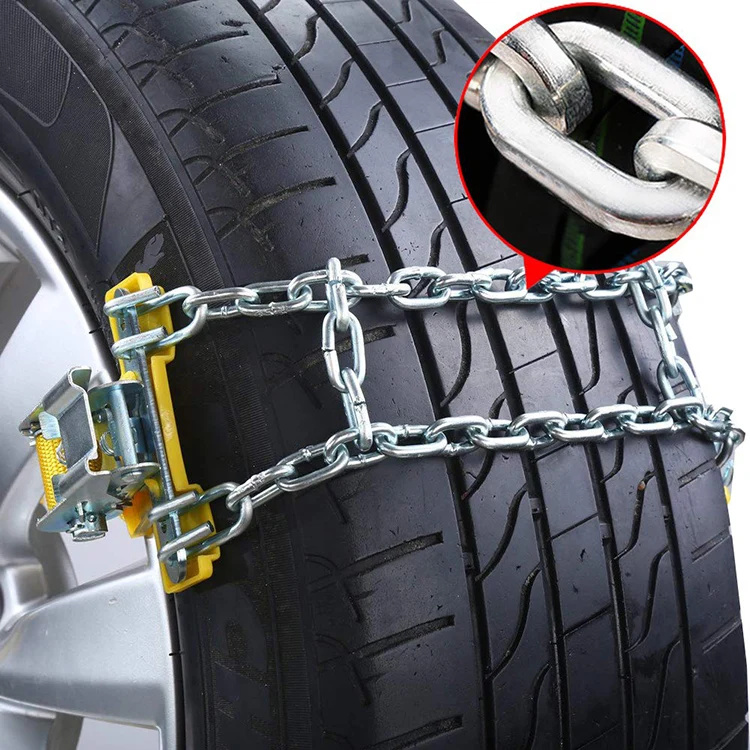 It is clear that cars should become more passable. It remains to understand how much, and in passing - whether the chains are fraught with great harm.
It is clear that cars should become more passable. It remains to understand how much, and in passing - whether the chains are fraught with great harm.
The first surprise was pleasant. As soon as I dug the World Wide Web shallowly, top-to-bottom, it turned out that a lot of chains are offered for Russians! Of all the variety, I looked at a couple of sets made by eminent companies, then chose three sets of domestic chains, and also a set of plastic belts, which also promise to improve cross-country ability.
As a rule, two chains are included in the kit, and it is prescribed to put them on the drive wheels. And if there are four driving wheels, manufacturers recommend buying two sets per car.
Foreign chains - all entirely with a rectangular section (the manufacturers promise better grip with ice in this form), have devices to facilitate installation, and others even with automatic tension. The steel is not only alloyed, but also with surface hardening. It seems that promises of high wear resistance are not advertising chatter. Russian chains, on the other hand, are made of raw round bar, uncoated, and the connecting elements (I wanted to call them rings, it’s too painful for them to have an arbitrary shape) are worked out very sloppily, but they are firmly welded. And our chains turned out to be twice as heavy as imported ones: dragging and deploying them is not a pleasant task. But they are cheap, you can't take that away.
Russian chains, on the other hand, are made of raw round bar, uncoated, and the connecting elements (I wanted to call them rings, it’s too painful for them to have an arbitrary shape) are worked out very sloppily, but they are firmly welded. And our chains turned out to be twice as heavy as imported ones: dragging and deploying them is not a pleasant task. But they are cheap, you can't take that away.
There are exactly two patterns of chains (I almost said “tread patterns”, although I would not have sinned much against the truth) for cars. The first, "ladder" - these are transverse chains with longitudinal ties. And the second type is variations on the theme of rhombuses and honeycombs. The first ones have a reputation for being the best in longitudinal traction, but sinning with insufficient susceptibility to lateral loads, that is, the car can be demolished to the side. They say about “honeycombs” that they work more evenly in both directions, and besides, they are more comfortable. Comfort was also promised to users of plastic belts.
Comfort was also promised to users of plastic belts.
I chose a test car with a short but rich biography: this is the same Hyundai Solaris sedan that went through the millstones of our accelerated life tests, which, let me remind you, are crowned with a blow to the barrier. We somehow delayed the body repair of this Solaris, but every cloud has a silver lining: if I had a new, brand new machine to test the chains - and how can I plow through such virgin snow? Danger threatens both the bumper of the car and my heart. And here - with a light heart. Well, except that the photos of a car with a crumpled front end are not very pleasing to the eye, but, as they say, I ask you to be understanding.
Full version available to subscribers onlySubscribe now
Monthly subscription
229
Yearly subscription
27481590
I'm already subscribed
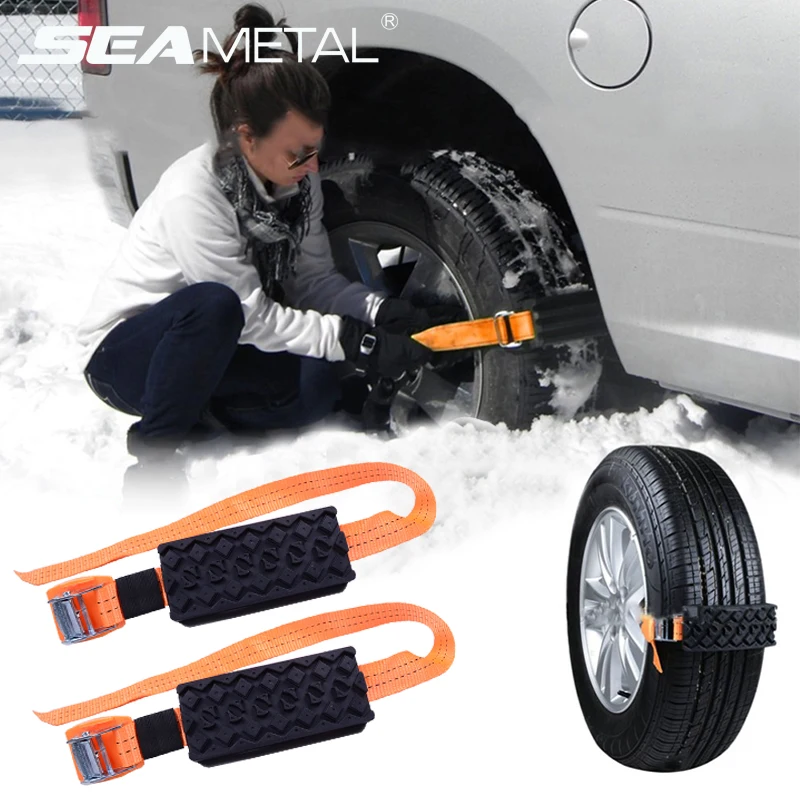 com.ua
com.ua Snowfall and ice make it very difficult for cars to move. To make it easier for drivers, it is recommended to use special snow chains, especially for trucks. They will help to increase the patency of equipment, and without significant labor and financial costs. It is enough just to buy chains of the appropriate size for the wheels of the car and firmly fix the steel links on the rubber.
The principle of operation of the chains is as simple as possible - the use of such devices increases the grip of the truck wheels with the road surface. Metal links literally bite into the ice shell or snow cover, this helps the wheels not to slip and it is easier to overcome obstacles.
Structurally, an anti-skid chain consists of two segments of connected metal links, which are located along the side surfaces of rubber tires, which are additionally connected to each other by transverse rows of links. The chain may have a different pattern depending on how the connecting elements are located. They can go both perpendicular to the direction of rotation of the wheel, and form rhombuses or a pattern resembling the shape of a honeycomb.
They can go both perpendicular to the direction of rotation of the wheel, and form rhombuses or a pattern resembling the shape of a honeycomb.
Snow chains for commercial vehicles are made of strong steel bars with reinforcement. Thanks to a special treatment, it is possible to significantly increase their strength, as well as provide them with good resistance to corrosion. To increase the coupling properties, sometimes not round, but conical rods are used.
Manufacturers now offer a wide range of different chains, which may differ in their design and materials.
Studded chains are available for the truck. Moreover, the spikes can also be of different shapes: round or square. They have very good performance parameters and work well in conditions where it is required to increase the grip of the wheels with the road. Suitable for use not only off-road, but also during ice.
Distinguish:

This variant works on a different principle. Such circuits are included in the work when you need to pick up speed or, conversely, slow down. The chain feed is carried out by pressing a button in the cab, and this happens already on the go. They can operate efficiently at speeds up to 50 km/h.
They have a special design - a special steel drum with an additional rubber coating, where the steel links are fixed. When the driver presses the button, the chain is fed to the wheel. Sections of the chain under the action of centrifugal forces are straightened and cover the surface of the wheel, increasing traction. If the chain is no longer needed, it can also be removed automatically at the touch of a button. The system is very interesting and convenient. But the installation of this option will be very expensive, so it is rarely used.
This is a simpler version. Such chains consist of separate transverse segments, which are fixed on the truck wheel with the help of special clamps that securely cover the wheel rim.
Their advantage is that if the wheel is already stuck in the mud, then even by putting on one such segment, you can help the car get out. Conventional snow chains will not allow this to be done, they must be put on in advance before going on an off-road trip.
It is also worth noting that the number of segments that the driver will put on the wheel can be different, most often it all depends on the specific road conditions. This can be adjusted independently.
Before choosing, you need to decide on many parameters: size, type, material, as well as the goal you want to achieve after installing the chains. All this is important, as it directly affects their effectiveness.
One of the important parameters is the nature of the heat treatment of the links of the snow chains. There are 3 main types:
There are 3 main types:
In addition to the material, it is equally important to decide what the driver wants to achieve with the installation of chains.
Studded snow chains are leaders in flotation. They are great for trucks, they do a great job if you need to pass through mud, snow and icy roads. True, driving with such chains on a very hard road surface is not recommended.
If it is not possible to buy studded snow chains, then you can increase the patency by another method. To improve grip and increase patency, it is enough to increase the number of transverse chain bars. This will help the car to better overcome difficult road sections.
This is important when transporting passengers and transporting fragile goods. Here it is best to take chains with "rhombus" or "honeycomb" patterns. They are most often used for buses.
A smooth ride is also important when driving in deep snow. If the chains allow you to drive smoothly, without jerking, then this minimizes the risk of wheel slip in loose snow.
Also remember that the size of the links will affect the smooth running.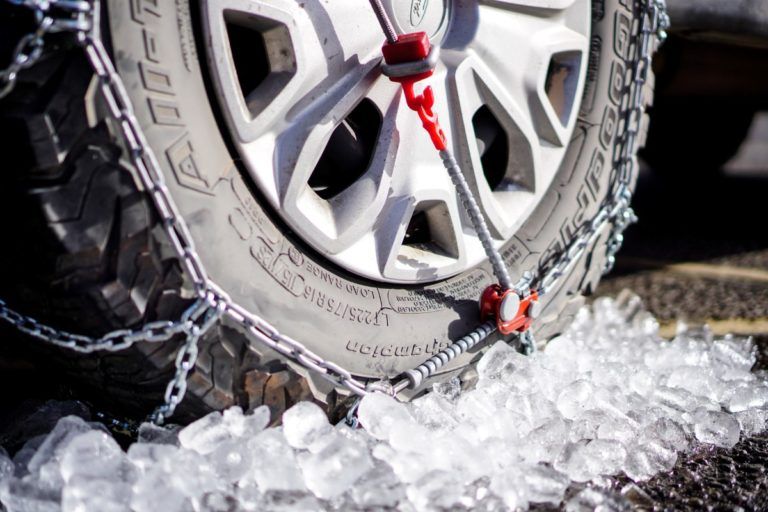 The larger each individual segment, the better the wheel will cling to loose road surfaces. But when driving on a hard surface, for example, on ice, for a smooth ride, it is better to choose smaller links.
The larger each individual segment, the better the wheel will cling to loose road surfaces. But when driving on a hard surface, for example, on ice, for a smooth ride, it is better to choose smaller links.
If the driver's priority is ease and speed of mounting and dismounting, segment chains are the best choice. Such "bracelets" are very quickly and easily mounted, and no special skills are required. Moreover, as mentioned earlier, they can be installed when the car is already bogged down to help it get out of the snowdrift. This is a fairly practical and easy-to-use option.
In the online store 130.com.ua you can buy snow chains for a truck in Kyiv, Kharkov or Odessa with delivery in Ukraine.
TOP 3 snow chains
Looking for the best quality and best chains for wheels? This rating of wheel chains is compiled on the basis of such parameters as: high demand with positive feedback from our customers, high-quality manufacturing - no factory defects and service calls, as well as official warranty and post-warranty support in Ukraine.